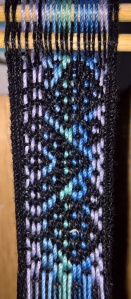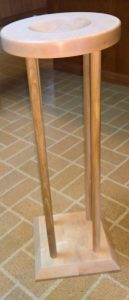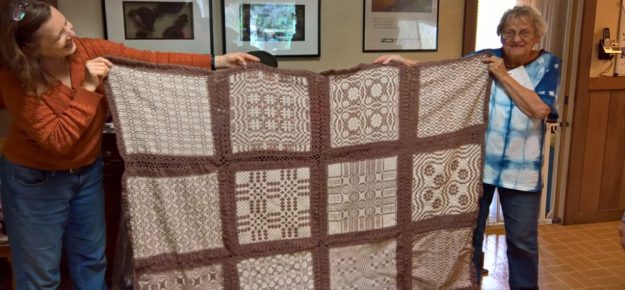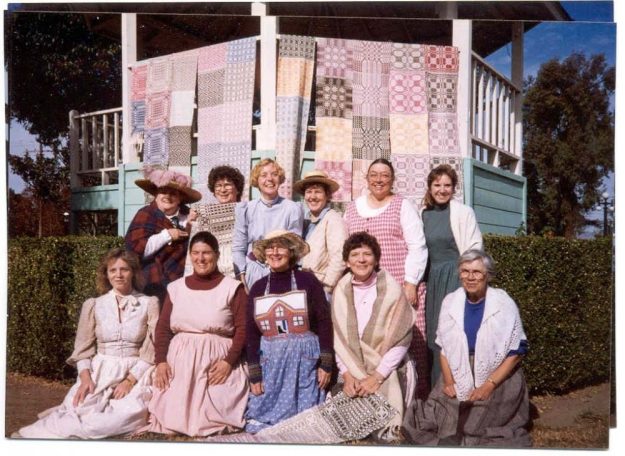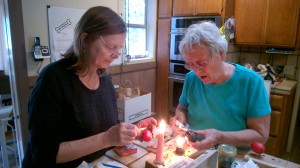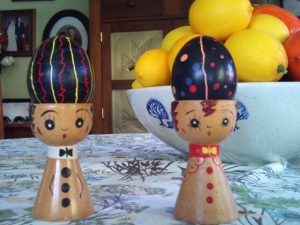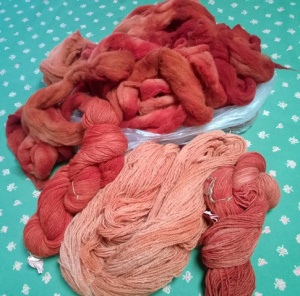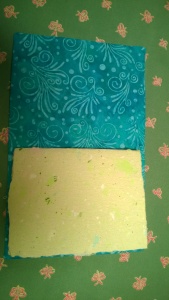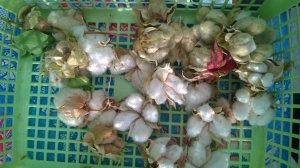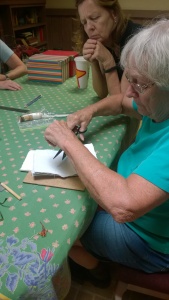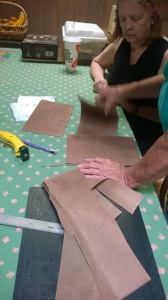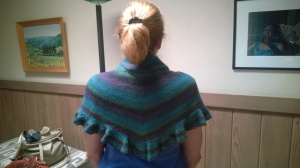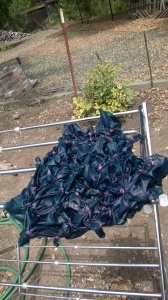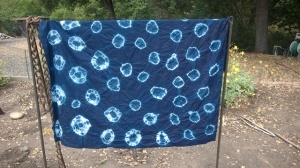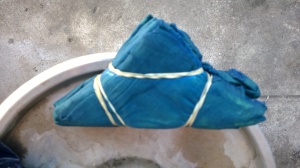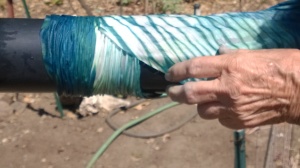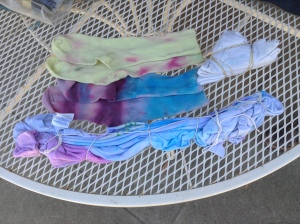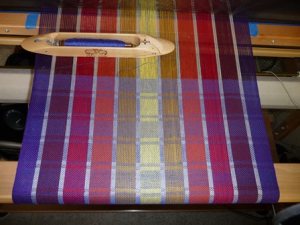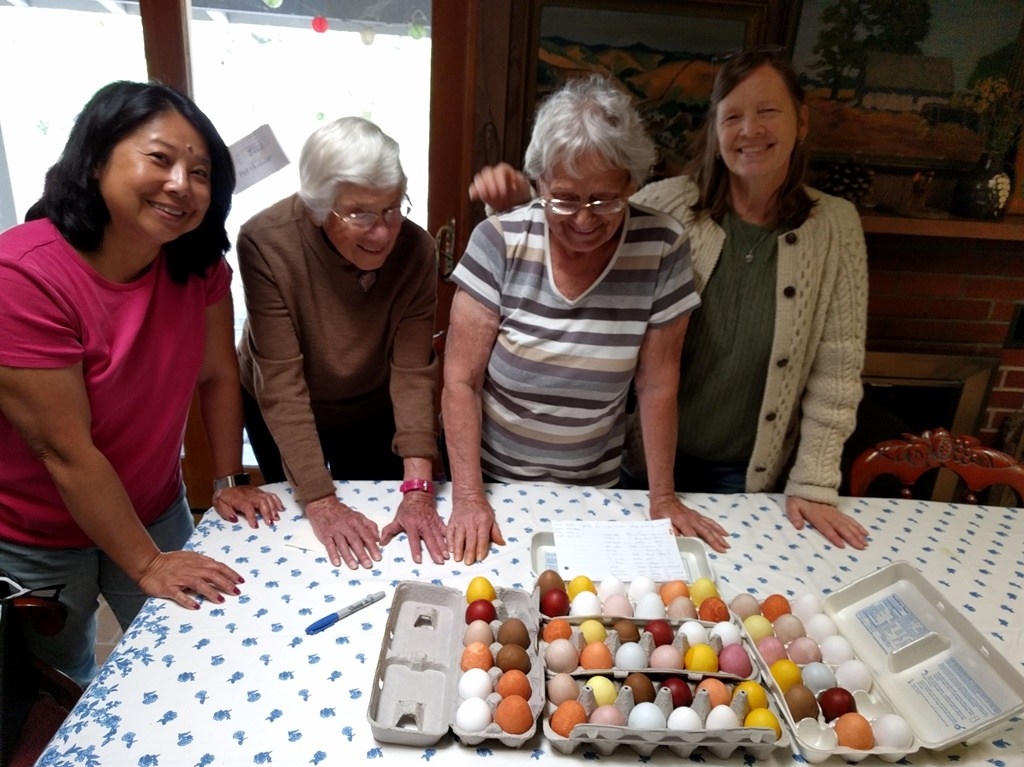
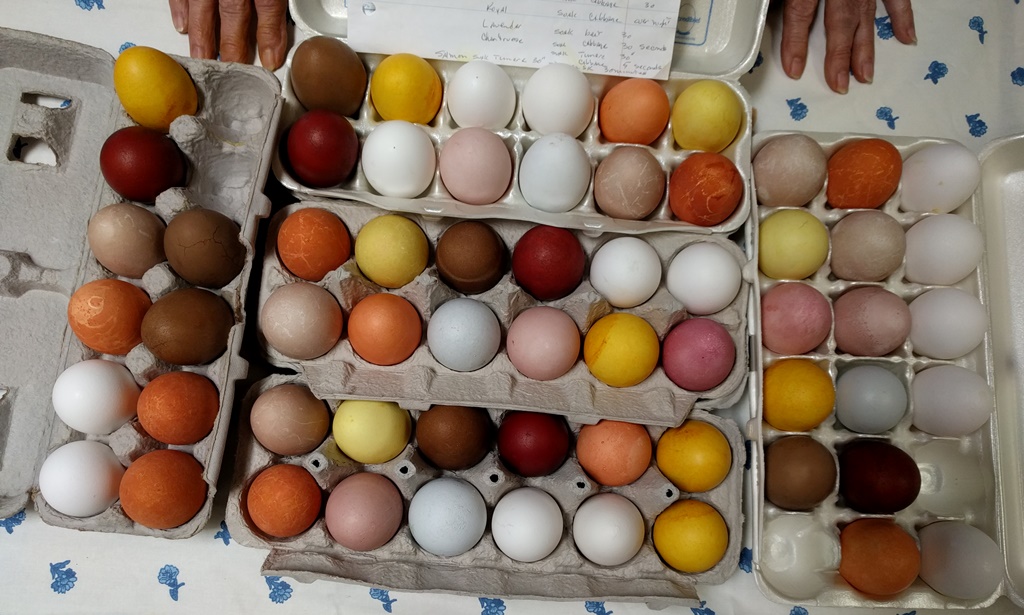
This meeting was our pre-Easter one where we decorate eggs in some manner. This year, we decided to dye them with food dyes (as described below). We got a great bunch of colors that were mixed according to Martha Stewart’s instructions from her website. Attending the meeting were: Ann, Phyllis, Sandy, Marsha (pictured), Frank (taking the picture) and Sharolene.
The eggs we dyed were colored with beets, red cabbage, turmeric, onion skins and coffee. The pale ones are blue and lavender. The dark colors were boiled for 30 minutes and the light ones were raw eggs soaked in the dye for 30 minutes. The ones we consistently turned were scratched and the ones we left alone came out nicer. We all agreed that it was a lot of work and a fair amount of wasted food but we learned some interesting things. Next year we are using the colors we liked the best and designing the eggs with leaves and wrapping them with color: Hint to all, If you ever have an occasion to cook red cabbage put a couple of white eggs in the pot at the same time and see what a pretty color you get. Then you can eat them.

